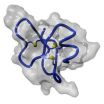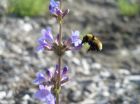(Press-News.org) INDIANAPOLIS – A study conducted in four American Indian communities in the Pacific Northwest presents an effective strategy to convince mothers to switch young children from drinking sweetened soda to water and shows that eliminating these sugary drinks from the diets of the youngest members of the tribe significantly decreased tooth decay.
The results of the dental arm of "The Toddler Overweight and Tooth Decay Prevention Study" (TOTS), which targeted American Indians from birth to 30 months of age, appear in the current issue (Volume 20, Number 4) of the peer reviewed journal Ethnicity & Disease.
The arrival of Europeans brought diseases such as measles, influenza and smallpox to the Americas. Less well known is that Europeans also brought premature tooth decay to American Indians by introducing sugar and sugared foods. Before the adoption of European food patterns, tooth decay was mostly a disease of old age in the New World. With the addition of sugar to the American Indian diet, tooth decay became a disease that begins early in life. Today American Indians of all ages, many without adequate or timely access to dental care, are severely affected by tooth decay.
To implement TOTS the researchers worked closely with tribal councils. In three of the four communities, good tasting water was made readily available in water fountains and inexpensive, refillable gallon jugs. Sugared soda was removed from tribal stores, and substitution of water for soda was actively encouraged through community outreach programs. Families received food counseling and breastfeeding support through tribal community health workers.
"After the successful switch to water, we compared the rate of tooth decay in children born in these three communities over the next 30 months with those born in a fourth community, where the young children had not benefited from the community interventions. We found a decrease of between 30 and 63 percent in early stage, potentially reversible tooth decay. For more advanced tooth decay the impact was smaller but nevertheless substantial. Children in intervention communities had 34 to 44 percent fewer cavities than those in the comparison community," said Gerardo Maupomé, B.D.S., M.Sc., Ph.D., professor of preventive and community dentistry at the Indiana University School of Dentistry and a Regenstrief Institute affiliated scientist. He is the first author of the study.
Because the researchers were looking at rate of decay within each community, whether or not the water was fluoridated did not impact the results of the study.
"These Pacific Northwest tribes consider water a sacred drink so tribal elders liked the idea of regaining American Indian values – it was a culturally attractive choice. Baby bottles and sippy-cups filled with sweetened drinks were not uncommon on the reservations prior to the study. If water isn't appealing and you don't have a lot of money, and you don't have access to fresh fruits and vegetables but soda is easy to find and cheap, you are likely to give your child soda and other junk food," said Dr. Maupomé, who is a health services researcher.
INFORMATION:
Co-authors of "Dental Caries in American Indian Toddlers after a Community-based Beverage Intervention" in addition to Dr. Maupomé, are Njeri Karanja, Ph.D. of the Kaiser Permanente Center for Health Research; Cheryl Ritenbaugh, Ph.D., and Mikel Aickin, Ph.D., of the University of Arizona; Tam Lutz, MPH, of the Northwest Portland Area Indian Health Board; and Thomas Becker, Ph.D., of Oregon Health and Sciences University.
The study was funded by the Native American Research Centers for Health and the National Institute of Dental and Craniofacial Research.
The IU School of Dentistry and the Regenstrief Institute are located on the campus of Indiana University-Purdue University Indianapolis.
Preventing tooth decay in the youngest American Indians
2011-01-22
ELSE PRESS RELEASES FROM THIS DATE:
Mars Express close flybys of martian moon Phobos
2011-01-22
Mars Express has returned images from the Phobos flyby of 9 January 2011. Mars Express passed Mars' largest moon at a distance of 100km.
The HRSC-camera recorded images of Phobos on 9 January 2011 at a distance of 100 km with a
resolution of 8.1 m/pixel. Due to the stereo viewing geometry during the flyby a small part of
the moon’s edge is only visible for the right eye resulting in odd 3D-perception in this area.
This part has been slightly adjusted for better viewing. Also, for the left eye at the left
edge of the image four small data gaps have ...
Defense mechanism against bacteria and fungi deciphered
2011-01-22
Under standard laboratory conditions, the human beta-defensin 1 (hBD-1), a human antibiotic naturally produced in the body, had always shown only little activity against microbes. Nevertheless the human body produces it in remarkable quantities. The solution to the puzzle was the investigation process itself, as the research group led by Dr. Jan Wehkamp at the Dr. Margarete Fischer-Bosch Institute for Clinical Pharmacology of the Stuttgart-based Robert Bosch Hospital found out.
Before the research group took a new approach to this research, defensins were usually tested ...
NFL linemen recover from back surgery, and so can you
2011-01-22
CHICAGO --- If NFL linemen can recover from back surgery and return to their spine-bruising careers, so can you get back into your "game" of horsing around with your kids or working out at the gym after back surgery.
That's the good news from a new Northwestern Medicine study that found 80 percent of NFL lineman – whose spines are especially vulnerable to degeneration – were able to return to play many more games after the surgery. These elite athletes spend a lot of time in a squatting stance that puts tremendous stress on their spine.
The study is encouraging ...
Mindfulness meditation training changes brain structure in 8 weeks
2011-01-22
Participating in an 8-week mindfulness meditation program appears to make measurable changes in brain regions associated with memory, sense of self, empathy and stress. In a study that will appear in the January 30 issue of Psychiatry Research: Neuroimaging, a team led by Massachusetts General Hospital (MGH) researchers report the results of their study, the first to document meditation-produced changes over time in the brain's grey matter.
"Although the practice of meditation is associated with a sense of peacefulness and physical relaxation, practitioners have long ...
Islands in the sky: How isolated are mountain top plant populations?
2011-01-22
Do mountain tops act as sky islands for species that live at high elevations? Are plant populations on these mountain tops isolated from one another because the valleys between them act as barriers, or can pollinators act as bridges allowing genes to flow among distant populations?
Dr. Andrea Kramer and colleagues from the Chicago Botanic Garden and the University of Illinois at Chicago were interested in pursuing these questions, particularly for a genus of plants, Penstemon (Plantaginaceae), endemic to the Great Basin region of the Western United States. They published ...
Researchers discover how to tame hammering droplets
2011-01-22
CAMBRIDGE, Mass. -- A water hammer can occur when a valve is suddenly opened or closed in a pipe carrying water or steam, causing a pressure wave to travel down the pipe with enough force that it can sometimes cause the pipes to burst. Now, new research shows that a similar effect takes places on a tiny scale whenever a droplet of water strikes a surface.
MIT's Kripa Varanasi, co-author of a report on the new finding published this week in the journal Physical Review Letters, says the phenomenon could help engineers design more durable condensing surfaces, which are used ...
Study of nutrition, Alzheimer's links hampered by research approach
2011-01-22
CORVALLIS, Ore. – Research is trying to determine whether Alzheimer's disease might be slowed or prevented with nutritional approaches, but a new study suggests those efforts could be improved by use of nutrient "biomarkers" to objectively assess the nutrient status of elderly people at risk for dementia.
The traditional approach, which primarily relies on self-reported dietary surveys, asks people to remember what they have eaten. Such surveys don't consider two common problems in elderly populations – the effect that memory impairment has on recall of their diet, or ...
Aquatic food web tied to land
2011-01-22
Millbrook, NY – A distant relative of shrimp, zooplankton are an important food source for fish and other aquatic animals. Long characterized as algae feeders, a new study published this week in the Proceedings of the National Academy of Sciences reports that nearly a third of zooplankton diets are supported by material that originates on land in lake watersheds.
The study brings scientists one step closer to clarifying the role that watershed inputs play in aquatic food webs. While it has been recognized that animals living at the bottom of lakes and streams rely, in ...
Scientists find industrial pollutants in Eastern Lake Erie carp
2011-01-22
BUFFALO, N.Y. -- Researchers from Upstate New York institutions, including the University at Buffalo, have documented elevated levels of two industrial pollutants in carp in eastern Lake Erie, adding to the body of scientific work demonstrating the lasting environmental effects of human activity and waste disposal on the Great Lakes.
The two contaminants the scientists studied were polychlorinated biphenyls (PCBs), manmade organic compounds once used in products including motor oils, adhesives, paints, plastics, pigments and dyes, and polybrominated diphenyl ethers (PBDEs), ...
2 bacterial enzymes confer resistanceto common herbicide, say MU researchers
2011-01-22
COLUMBIA, Mo. – In an article in the Nov. 23 issue of the journal The Proceedings of the National Academy of Science, researchers with Dow AgroSciences and the University of Missouri report on two bacterial enzymes that, when transformed into corn and soybeans, provide robust resistance to the herbicide 2,4-D. The discovery may soon provide Missouri corn and soybean growers a solution to the growing problem of herbicide-resistant weeds.
The spread of herbicide resistance has become an increasing concern for growers because undesired plants, such as Palmer amaranth and ...




